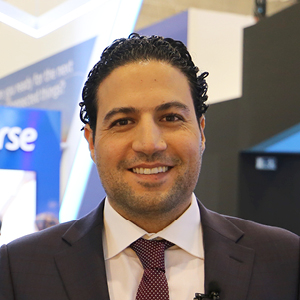Industry Thought Leadership
LTE and 5G Build Momentum in MEA for 2018
April, 2018Although 4G/LTE is still in the process of being rolled out in many places, it has now truly become the world’s new mobile standard. At the same time, though, 5G has quickly been gaining ground around the world and is getting close on the heels of 4G.
Syniverse has been in the throes of helping operators complete their transition to 4G while at the same time beginning to prepare for 5G, and we recently examined some of the ramifications of what we’ve seen these two areas at this year’s Mobile World Congress. There, we released a study on LTE roaming patterns that revealed important implications for the development of LTE in MEA, and we also held a number of customer meetings to share our vision on the factors that will have the biggest impact on 5G development.
MEA’s large population, surging mobile data use and lack of fixed-line internet connectivity offer a sizable opportunity for these 4G and 5G services in the next few years, and we’re looking forward to helping our customers fully embrace this mobile era. Our LTE roaming study and 5G meetings revealed promising opportunities for both these market factors in MEA.
LTE Becomes Majority of Global Roaming Traffic
Our study focused on traffic between six regions – North America; Latin America; Europe; Asia Pacific; the Middle East and Africa; and India – and the findings revealed that in the last year LTE traffic has surpassed non-LTE traffic and now represents the majority of global roaming traffic, rising to 54 percent in 2017 from 46 percent in 2016.
Additionally, the findings highlighted the need for the mobile industry to more urgently prepare for technologies like 5G, based on the eight years that it took from the time that LTE was commercially launched for it to surpass the previous generation of technology. A challenge then is to enable LTE roaming both in MEA and on a global scale. But outside the Americas, where most of LTE roaming is concentrated, the tipping point with global LTE roaming hasn’t fully occurred yet, and providing LTE roaming service remains a competitive differentiator.
Critically, a major barrier in providing a consistent LTE service footprint was found to lie in the inter-regional connectivity that an IPX network can enable. To this end, our data suggests that for routes across MEA and the rest of the world, operators need to develop a full-scale strategy for integrating IPX and accelerating the maturity of LTE networks.
Critical Factors for 5G Market Introduction
In the same way, IPX will be crucial for 5G, and 2018 will likely see the mobile industry take its biggest steps yet in rolling out 5G. However, the next phase of 5G development will greatly depend on the continued rollout of LTE and how smoothly operators are able to work through complexities on that end. For this reason, at Mobile World Congress, we held customer meetings where we identified several factors that we see as playing a crucial part in the further growth of LTE and thus the market adoption of 5G. Here are two of the most important of these.
- Maximizing interconnection footprint – Operators that have deployed LTE must continue to focus on establishing reach to a maximum number of LTE networks to offer the widest coverage for their users. As discussed above, IPX has emerged as a fundamental network backbone for LTE and other next-generation services, because it allows a single-connection approach that simplifies testing and deployment while consolidating a large number of connections worldwide. For this reason, it’s recommended that operators include IPX at the core of their strategy in not just building out their LTE networks, but also laying a strong foundation for future 5G rollouts.
- Ensuring roaming interoperability – Enabling ubiquitous LTE roaming has presented serious challenges to operators, because it requires the testing of a number of critical roaming processes. Specifically, the complex areas involved in the implementation of LTE roaming that operators need to carefully address include Diameter signaling infrastructure, roaming via PGW or GGSN to legacy systems, wholesale clearing and settlement processes, and exchange of TAP records. Ensuring this roaming interoperability will go a long way in ensuring a smooth migration to 5G, which will include the introduction of several options, scenarios, and business models that will have to be supported.
MEA will soon see a dynamic phase of mobile development with unprecedented demands for high-speed, high-capacity networks. As we communicated through our study and meetings at Mobile World Congress, LTE roaming and 5G adoption will be crucial in enabling this phase, but one barrier to this lies in the connectivity and security that IPX provides. For this reason, it’s imperative that operators have a full-scale IPX strategy in place to meet the demands of the exciting future, and we’re looking forward to continuing to help our customers navigate this strategy for both LTE and 5G.

